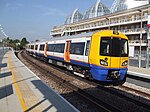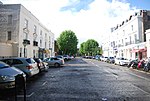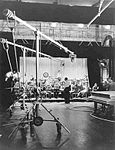Embassy of Georgia, London
Buildings and structures in the Royal Borough of Kensington and ChelseaDiplomatic missions in LondonDiplomatic missions of Georgia (country)Georgia (country) stubsGeorgia (country)–United Kingdom relations ... and 2 more
Holland ParkLondon stubs

The Embassy of Georgia in London is the diplomatic mission of Georgia in the United Kingdom. Diplomatic relations between the two countries were originally established in 1919, effectively terminated after 1921, but restored in 1992 following dissolution of the Soviet Union.
Excerpt from the Wikipedia article Embassy of Georgia, London (License: CC BY-SA 3.0, Authors, Images).Embassy of Georgia, London
Russell Gardens, London Notting Hill (Royal Borough of Kensington and Chelsea)
Geographical coordinates (GPS) Address Nearby Places Show on map
Geographical coordinates (GPS)
| Latitude | Longitude |
|---|---|
| N 51.5 ° | E -0.211 ° |
Address
Russell Gardens 9
W14 8EZ London, Notting Hill (Royal Borough of Kensington and Chelsea)
England, United Kingdom
Open on Google Maps









